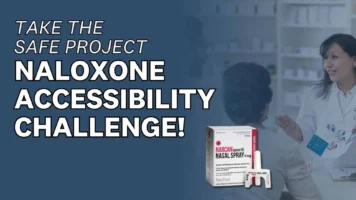
The opioid epidemic is a national health crisis, and it’s why we all need to know what to do if we witness an overdose.
Nearly 108,000 Americans lost their lives to overdoses in 2021. This is the highest number of Americans lost to overdoses ever recorded. The social isolation due to COVID-19 and the infiltration of fentanyl into the illegal drug supply have exponentially increased the number of fatal and nonfatal overdoses. For every 1 fatal overdose, there are 15 nonfatal overdoses. This needs to be addressed.
If you have a loved one struggling with substance use disorder, we recommend carrying naloxone and understanding how to administer it in case someone has an overdose.
Symptoms and Indications of an Overdose:
- Respiratory depression: slow and shallow breathing or cessation of breathing
- Making snoring or gurgling sounds
- Blue or gray skin color
- Dark lips and fingernails
- Unable to talk
- Disorientation
- Pinpoint pupils
- Decreased level of consciousness, can’t be woken up
- No response to stimuli
- Drug paraphernalia in the vicinity
- Note: If you can’t get them to respond, don’t assume they are asleep. Not all overdoses happen quickly and sometimes it can take hours for someone to die. Taking action in those hours means you could save a life.
What to Do:
- This is a medical emergency: Call 911 for a first responder immediately.
- Try to get the person to respond.
- Administer CPR if you are qualified.
- Rub knuckles on the breast bone.
- If they respond, keep them awake and breathing.
- If their skin is blue, perform mouth to mouth rescue breathing.
- Stay with the person. If you must leave, place the person in a recovery position (on their left side).
- Look around the victim to see if they are carrying NARCAN® (Naloxone), or have it in the vicinity, or if anyone in the area has it… and administer it! Keep in mind, it can take more than one dose of naloxone to revive a person who has overdosed. There is no harm in giving multiple doses to a person in an attempt to revive them. Learn more about Naloxone.
What Not to Do:
- Do not put the person in a cold bath.
- Do not inject them with saltwater or stimulant drugs (methamphetamine).
- Do not try to have them walk it off or sleep it off.
- Do not induce vomiting.
Learn more about substances and how to respond to an overdose with these free downloadable fact-sheets courtesy of International Overdose Awareness Day:





